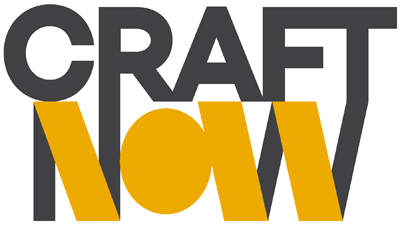Warren Seelig
An equal interest for Seelig to the very materiality of the woven textile is building up form and the relationship of weaving to basic architectural principles. Seelig was born in Abington, PA, in 1946. His formal training began with Philadelphia College of Textiles and Science, followed by a master’s degree in fine art at the Cranbrook Academy of Art. He became interested in the writings of Bauhaus textile artist Anni Albers and the work included in the groundbreaking 1972 craft exhibition, Objects USA, held at what is now the Museum of Arts and Design in New York.
His earlier series “Spoke & Axle” is composed of tailored bands of synthetic double-weave fabrics made of such materials as mesh, Tyvek paper and nylon stretched across sculptural frameworks of hand-wrought stainless-steel rods. Seelig states, “When yielding to its natural geometric form, textile becomes an energy field which increases in power proportionally to its abstraction and simplicity.”1
Seelig brings contrasting aspects of textile production to light — the craft of weaving by hand while simultaneously referencing industrialized and scientific processes. From this series, several large scale engineered constructions emerged; commissions such as the 60-foot work, Spiral Light, for Royal Caribbean International or more recently, an installation for the U.S. embassy in Monrovia, Liberia.
His most recent series entitled “Shadowfields” has a metaphorical relationship to textiles, utilizing materials such as plexiglass, metal and rock instead of more traditional textiles. Using a three-dimensional woven matrix made of metal, he incorporates various materials such as rock, metal, wood and Lucite to create depth and pattern. Seelig describes these as “material fields [that] are becoming less tangible and more illusive. The complex relationship between materiality, light and shadow is evolving into an energy field, a beautiful matrix of obsessively repeating parts and particles, expanding, swelling, increasing, and decreasing. For me, the textile is a phenomenon that is ‘spirited’ and evokes images of connection and connectedness, of crystalline fields, cellular atmospheres, and granular surface in three dimensions.”2
Seelig is a distinguished visiting professor in the Fibers/Mixed Media program at The University of the Arts in Philadelphia where he teaches, curates and writes on various subjects related to textile, fiber and material studies. Seelig has twice received individual fellowships from the National Endowment for the Arts and three fellowships from the Pennsylvania Council on the Arts. He has lectured extensively including programs at the Korean National University of the Arts, Banff Center in Alberta, the Royal College of Art in London and the Gerrit Rietveld Academy in Amsterdam, and has written extensively for various magazines and journals including: American Craft, Fiber Arts, Surface Design Journal, Textilforum, and Nouvel Objet.
His work is in the collections of museums, colleges and in private and corporate collections worldwide. His work has been included in several solo exhibitions such as: the British Craft Centre, London (1977); St. Mary’s College, Notre Dame, IN (1990); Machina Textrina, The Museum for Textiles, Toronto, Canada (1996);Suspended Animation, Maine Center for Contemporary Art, Rockport, ME (1998); and the forty year retrospective Textile Per Se, Maryland Institute College of Art, Baltimore, MD (2009). Major group exhibitions include: Art Fabric Mainstream, San Francisco Museum of Modern Art (1981); Old Traditions, New Directions, Textile Museum, Washington, DC (1981); Poetry of the Physical, American Craft Museum, New York (1987); Craft Today: USA, American Craft Museum European Tour (1990); 4th International Textile Competition, Museum of Kyoto, Kyoto, Japan (1994); Fiber: Five Decades from the Permanent Collection, American Craft Museum, New York, NY (1994); Textiles and New Technology, British Crafts Centre, London (1996); World Contemporary Craft, Chongju International Craft Biennale, Chongju, Korea (1999); Fabric & Fiber 99’, Portland Museum of Art, Portland, Maine (1999); Haystack: Pivotal Transformations, Maine Center for Contemporary Art (2001); Jack Lenor Larsen, Creator and Collector, Museum of Arts and Design New York (2004); 20/20 enVision, Colby College and University of New England (2004); and Daegu Textile Art Documenta 2005, Daegu Metropolitan City, Korea (2005).
Warren is a regular visiting critic at Rhode Island School of Design and is a mentor in the graduate program at Maine College of Art. He lives and works in Rockland, Maine.
—Melissa Caldwell
NOTES
1 Timothy Rub, “Introduction,” Philadelphia Museum of Art Handbook, Philadelphia, Pennsylvania: Philadelphia Museum of Art, 2014, xii–xiv and Kathryn Bloom Hiesinger, Collecting Modern: Design at the Philadelphia Museum of Art Since 1876, Philadelphia, Pennsylvania: Philadelphia Museum of Art, 2011, 13 – 17; 25 – 31
2 Rub, xviii–xv and Hiesinger, 41.
3 Hiesinger, 41–55.
4 Hiesinger, 118–119.
5 Ibid.
6 Hiesinger, 119–122.
7 Elisabeth R Agro, “Contemporary Craft,” Philadelphia Museum of Art Handbook, Philadelphia, Pennsylvania: Philadelphia Museum of Art, 2014, 384.
8 Darrel Sewell, “A Legacy of Crafts: Contemporary Crafts in the Philadelphia Museum of Art” Crafting A Legacy: Contemporary American Crafts in the Philadelphia Museum of Art, 2002,19. For further study on the founding of Collab, please refer to Kathryn Bloom Hiesinger, Collecting Modern: Design at the Philadelphia Museum of Art Since 1876, Philadelphia, Pennsylvania: Philadelphia Museum of Art, 2011, 145.
9 Sewell, 20.
10 Agro, 384.
11 Sewell, 21.
12 Agro, 384.
13 Ibid.
14 “Techne,” Oxford English Dictionary, accessed September 29, 2015, http://www.oed.com/view/Entry/273538?redirectedFrom=techne#eid
